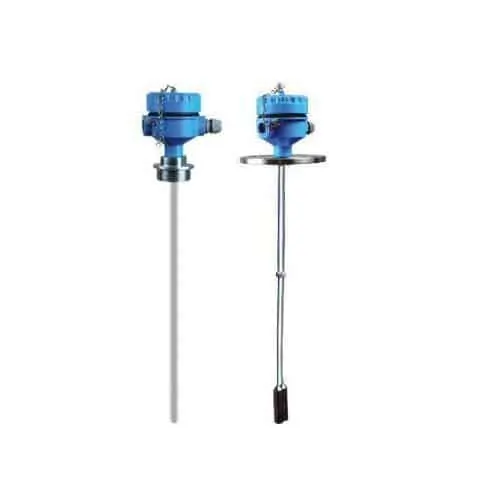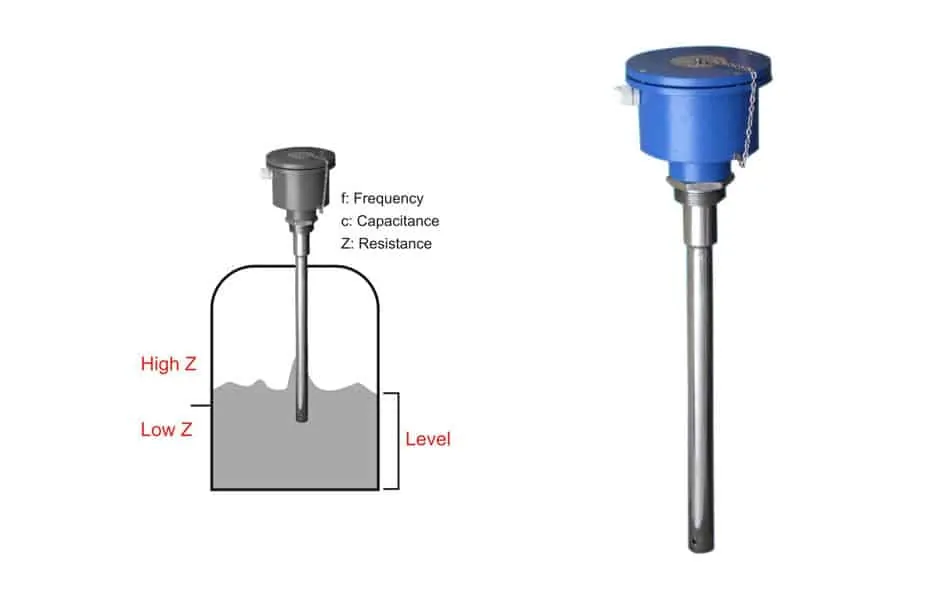Continuous level measurement and point level detection in liquids and solids with capacitance probes.

Capacitance level detectorsalso known as Capacitance level transmitter, are also referred to as radio frequency (RF) or admittance level sensors. They operate in the low MHz radio frequency range, measuring admittance of an alternating current (ac) circuit that varies with level. Capacitance level sensors are a proved, as well as a cost-effective solution for level measurement, and point level detection in liquids and bulk solids. Various transmitters for continuous level measurement and switches, for point level detection are available. The measurement of the interface is also possible. The measuring principle is proven in millions of applications.
Sino-Inst offers a variety of Capacitance Level Transmitters for level measurement. If you have any questions, please contact our sales engineers.
Features of SI700 RF capacitance level transmitter

- Capacitive level measurement enables measurement without blind spots over the entire sensor length
- Fully insulated capacitive sensors also measure aggressive liquids
- Cost-effective measurement for trouble-free and maintenance-free operation
Capacitance measurement: Measuring Principle
The principle of capacitive level measurement,
is based on the capacitance change of a capacitor.
The probe and the tank wall form a capacitor,
whose capacitance is dependent on the amount of product in the tank:
An empty tank has a lower, a filled tank a higher capacitance.
A simple capacitor consists of two electrode plate,
separated by a small thickness of an insulator,
such as solid,
liquid, gas, or vacuum.
This insulator is also called as dielectric.
Value of C depends on dielectric used,
area of the plate and also distance between the plates.

Where:
C = capacitance in picofarads (pF)
E = a constant known as the absolute permittivity of free space
K = relative dielectric constant of the insulating material
A = effective area of the conductors
d = distance between the conductors
This change in capacitance can be measured using AC bridge.
Benefits RF Capacitance Level Transmitter
Proven and tested measuring principle – robust and safe
Universally adaptable probe
Reliable operation also in strong build-up formation and viscous media
Easy commissioning
Parameters of RF Capacitance Level Transmitter
FEATURES:
- Liquids and Bulk Solids
- KSHIELD™ Sensing Probes and Single Setpoint
- Electronics that Provide Immunity to Buildup
- Integral and Remote Electronics
- Easy Set Up Via External Magnet or Pushbuttons
- Housing with Glass Viewing Cover
- Wide Variety of Sensing Probes to (450ºF / 800 psig)
- Single Point Detection
- Single Touch Initialization
- Element Sensitivity Down to 0.5 pF
OPTIONS:
- 316L SS Enclosure
- External “Alarm” Indicating Lamp
- Tip Extended Extensions to 60 in / 1524 mm
- Pipe Extensions to 240 in / 6096 mm
- Industry Standard Bulk Solids Mounting Plate
- Process Connections: 3/4” NPT, 1 1/4” NPT, and Custom Flanges
Applications of
Capacitance Level Transmitter
Capacitance Level Probes are used for measuring level of:

- Liquids
- Powered and granular solids
- Liquid metals at very high temperature
- Liquefied gases at very low temperature
- Corrosive materials like hydrofluoric acid
- Very high-pressure industrial processes.
To the high-temperature pressure transmitter.
Sino-Instrument supplies RF Capacitance level transmitters,
is used in bulk solids, such as pellets, granules, powders, slurries,
flow / no flow, conductive products and interface.
Request a Quote

Wu Peng, born in 1980, is a highly respected and accomplished male engineer with extensive experience in the field of automation. With over 20 years of industry experience, Wu has made significant contributions to both academia and engineering projects.
Throughout his career, Wu Peng has participated in numerous national and international engineering projects. Some of his most notable projects include the development of an intelligent control system for oil refineries, the design of a cutting-edge distributed control system for petrochemical plants, and the optimization of control algorithms for natural gas pipelines.

